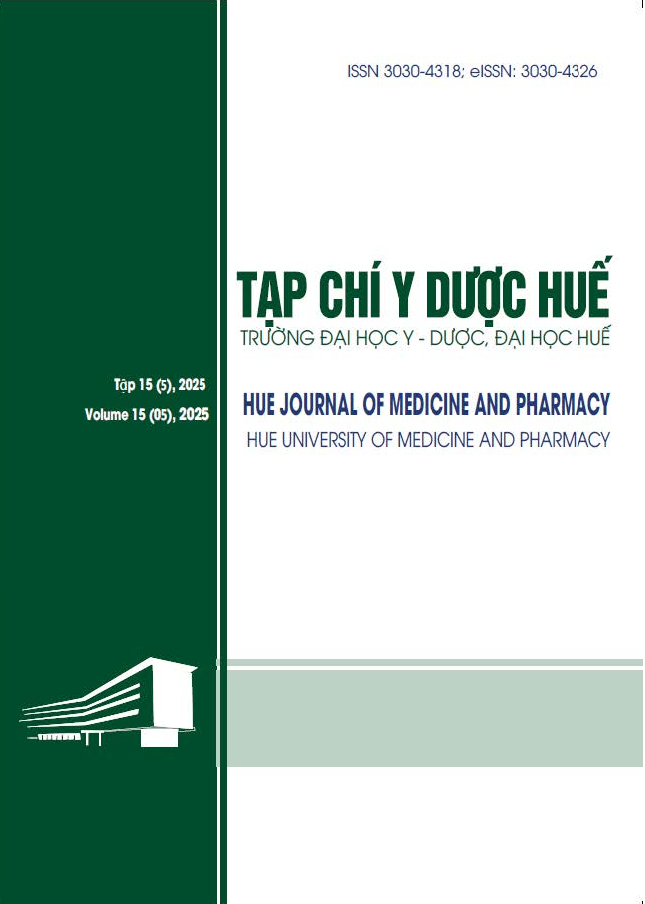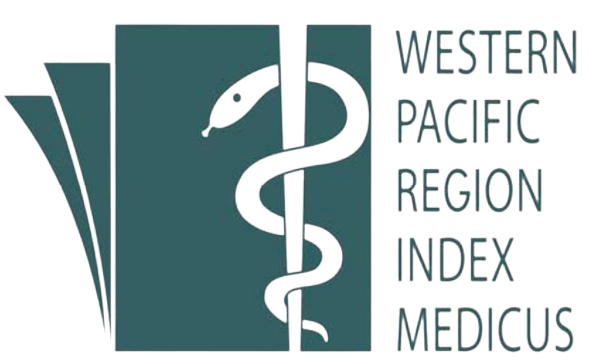Abstract
Background: Child malnutrition has been a public health problem in developing countries, especially Asian countries, including Vietnam. Children under 5 years of age are the most susceptible to malnutrition, which is a period of high nutritional needs and a very sensitive period to diseases. The rate of malnutrition in our country is still high compared to the classification of the World Health Organization, especially in mountainous areas, ethnic minorities, and difficult conditions.
Objectives: 1. To determine the rate of malnutrition among children under 5 years old in Quy Chau district, Nghe An province in 2020. 2. To find out some factors related to underweight malnutrition in research subjects.
Materials and method: Cross-sectional descriptive study on 402 children under 5 years old in 4 communes of Quy Chau district, Nghe An province, from January 2020 to June 2021. Using scales and rulers to measure anthropometric indicators of children, mothers, or caregivers interviewed according to a set of prepared questionnaires.
Results: According to the assessment of malnutrition based on weight-for-age, height-for-age, and weight for-height indexes, the rate of underweight and moderate malnutrition accounted for 23.6%, while the rate of children was low. Severe or moderate stunting accounted for 18.1% and the proportion of children with severe and moderate stunting accounted for 13.4%. Child factors related to underweight malnutrition are gender, age, birth weight, and history of illness in the last 1 month; Family and maternal factors related to underweight malnutrition of children under 5 years old are education and occupation, knowledge of child care; Factors of mothers’ practices related to underweight malnutrition in children are working during pregnancy, having the mother express milk when the mother is at work, number of meals when the child is sick; In addition, mothers’ child care practices and underweight malnutrition in children under 5 years old are also related.
Conclusion: To reduce the rate of malnourished children being underweight, stunted, or wasted, it is necessary to pay attention to the mother’s nutrition during pregnancy so that the child reaches a minimum weight of > 2500 g. Increasing knowledge of caregivers including increasing knowledge of breast milk; correct and sufficient vitamin A supplementation; knowledge about solid foods, and when and how to feed babies, especially when they are sick.
| Published | 2025-09-30 | |
| Fulltext |
|
|
| Language |
|
|
| Issue | Vol. 15 No. 5 (2025) | |
| Section | Original Articles | |
| DOI | 10.34071/jmp.2025.5.4 | |
| Keywords | suy dinh dưỡng, tình trạng dinh dưỡng, thực hành nuôi con malnutrition, nutritional status, child-rearing practice |

This work is licensed under a Creative Commons Attribution-NonCommercial-NoDerivatives 4.0 International License.
Copyright (c) 2025 Hue Journal of Medicine and Pharmacy
Viện Dinh Dưỡng, UNICEF. Báo cáo tóm tắt tổng điều tra dinh dưỡng 2009-2010. Viện Dinh Dưỡng quốc gia: Nhà xuất bản Y học Hà Nội. 2011.
Viện Dinh Dưỡng. Tổng điều tra dinh dưỡng năm 2019 - 2020. Viện Dinh Dưỡng quốc gia: Nhà xuất bản Y học Hà Nội. 2020.
Viện Dinh dưỡng, UNICEF. Báo cáo tóm tắt tổng điều tra dinh dưỡng 2009-2010. Viện Dinh Dưỡng quốc gia: Nhà xuất bản Y học Hà Nội. 2011.
Viện Dinh dưỡng. Tổng điều tra dinh dưỡng năm 2019 - 2020. Viện Dinh Dưỡng quốc gia: Nhà xuất bản Y học Hà Nội. 2020.
Bộ Y tế. Hướng dẫn quốc gia dinh dưỡng cho phụ nữ có thai và bà mẹ cho con bú, ban hành kèm theo Quyết định số 776/QĐ-BYT ngày 08 tháng 3 năm 2017 của Bộ trưởng Bộ Y tế. 2017:tr1,3,24,29.
Bộ Y tế. Hướng dẫn kỹ thuật chuẩn bị và ứng phó về dinh dưỡng trong tình huống khẩn cấp. 2019; tr 26.
Trung tâm Y tế Quỳ Châu. Báo cáo tổng hợp đợt cân đo trẻ dưới 5 tuổi năm 2019. 2019.
Nguyễn Thị Hằng, Hoàng Thị Thanh. Nghiên cứu tình trạng dinh dưỡng và cơ cấu bệnh trẻ em tại Thái Bình năm 2007. Tạp chí Y học thực hành. 2008;(629):125-32.
Nguyễn Nam Tiến. Thực trạng suy dinh dưỡng trẻ em dưới 5 tuổi và một số yếu tố liên quan tại xã Lãng Công, huyện Sông Lô, tỉnh Vĩnh Phúc 2013. Luận văn thạc sĩ Y học dự phòng. Trường Đại học Y Hà Nội. 2013.
Lê Hoàng Thị Hoa, Hoàng Thị Vân Anh. Cáp Minh Đức. Tình trạng suy dinh dưỡng và một số yếu tố liên quan ở trẻ em dưới 5 tuổi tại xã Quyết Tiến, Tiên Lãng, Hải Phòng năm 2019 - 2020. Tạp chí Y học Dự phòng. 2020;31(5):45–51.
Trần Quang Trung, Nguyễn Thị Thuỳ Linh, Lê Thị Hiên, Nguyễn Thị Thu Hiền, Bùi Thị Quỳnh Trâm, Nguyễn Thị Kiều Anh và cộng sự. Tình trạng dinh dưỡng và một số yếu tố liên quan ở trẻ em dưới 5 tuổi tại huyện Ba Vì thành phố Hà Nội năm 2019. Tạp chí Y học Dự phòng. 2020;30(5):82–89.
Trần Thị Hải, Ngô Thanh Thảo. Thực trạng và những yếu tố ảnh hưởng tới tình trạng suy dinh dưỡng nhẹ cân của trẻ dưới 5 tuổi tại 14 thôn khó khăn thuộc huyện Đơn Dương, tỉnh Lâm Đồng năm 2019. Tạp chí Y học Cộng đồng. 2019;63(2):71-75.
Hoàng Đức Phúc, Trần Quang Trung, Nguyễn Thị Kiều Anh, Đặng Thị Thanh Hà, Nguyễn Thị Mai Lan, Nguyễn Thị Hải Yến. Thực trạng dinh dưỡng của trẻ em dưới 5 tuổi tại một số quận huyện ở Hà Nội năm 2019. Tạp chí Y học Dự phòng. 2020;30(6):53–60.
Hà Huy Khôi. Góp phần xây dựng đường lối dinh dưỡng ở Việt Nam. Hà Nội: Nhà xuất bản Y học. 2018: tr.56-59.
Bộ Y tế - Viện Dinh dưỡng. Thông tin giám sát dinh dưỡng. 2014.
Bhutta ZA, Salam RA. Global nutrition epidemiology and trends. Ann Nutr Metab. 2012;61(Suppl 1):19-27.
Kang Y, Kim J. Risk factors for undernutrition among children 0–59 months of age in Myanmar. Matern Child Nutr. 2019;15(4):e12821.






